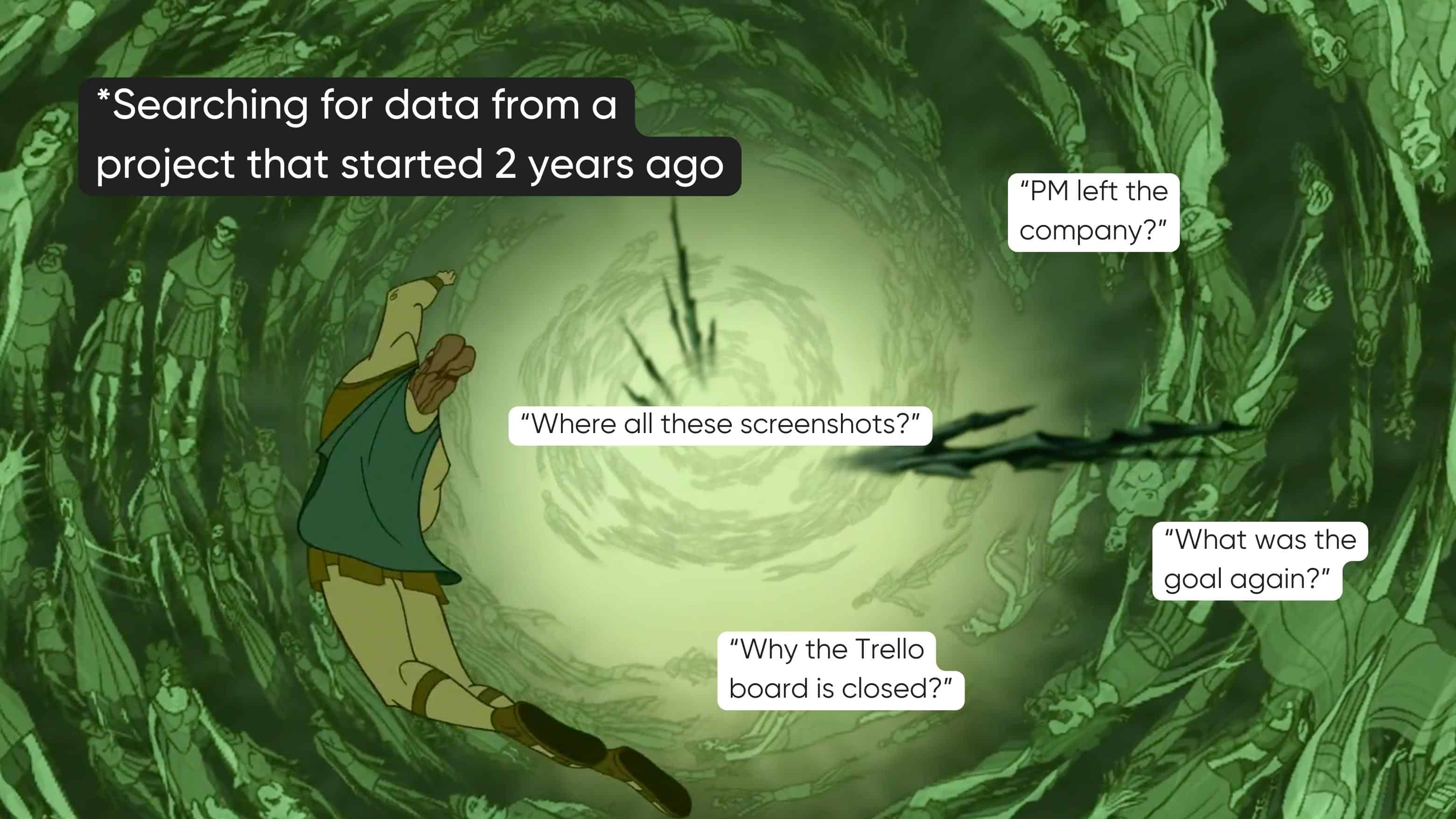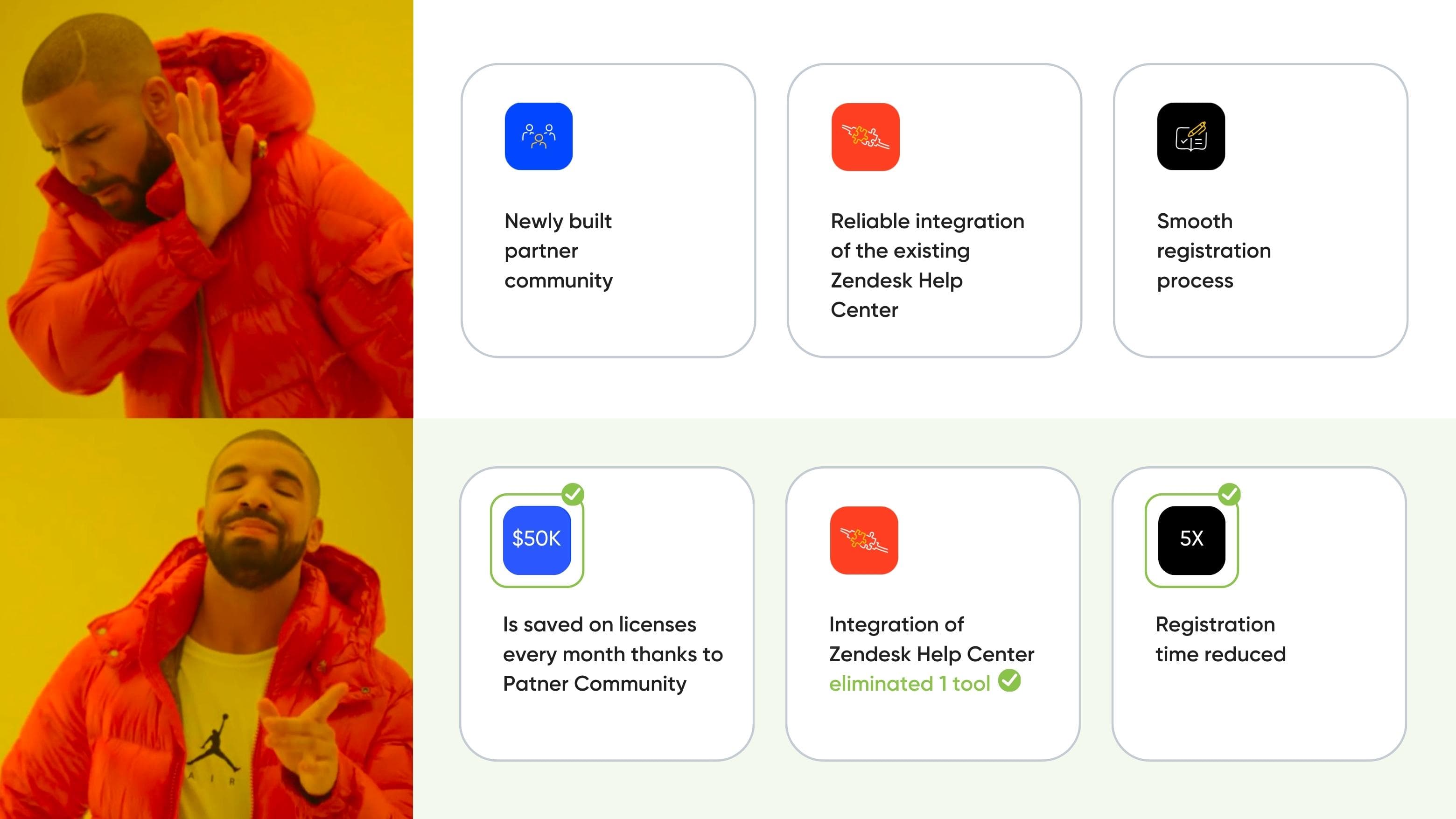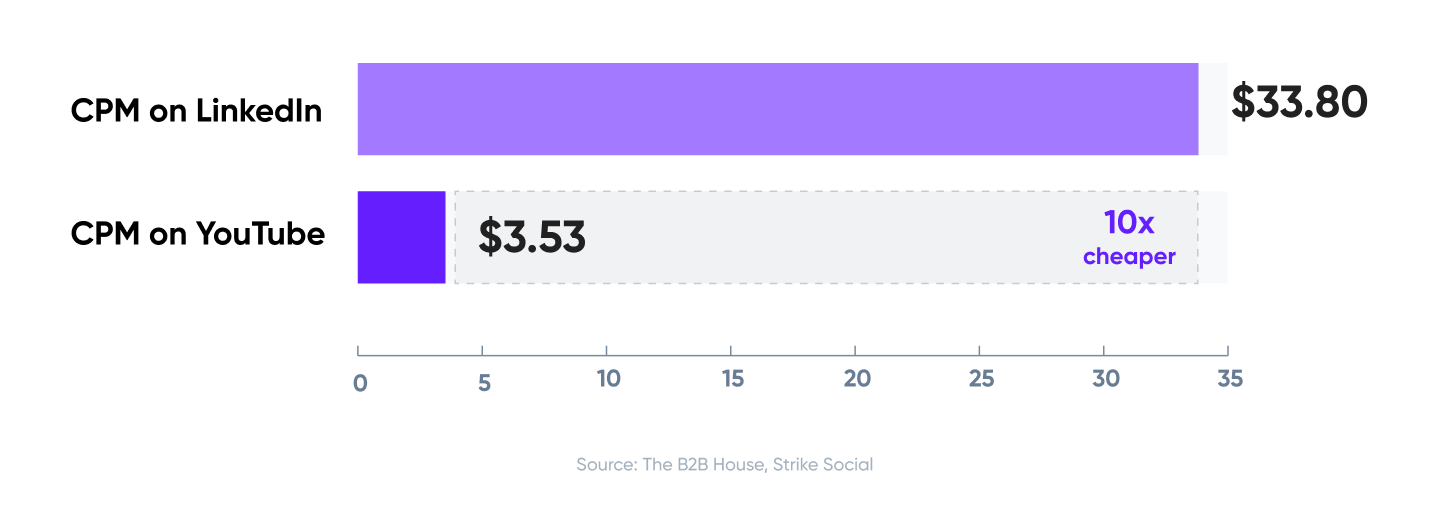Only marketers know that the thirteenth and final labor of Hercules was to publish a case study that would convert. Sadly, even the mightiest of Greek heroes is still coping with this task. So, let’s help him to go through this and finally ascend to the marketing Olympus.

Tip #1: Begin collecting information before the project kickoff
For quite some time, we at Cieden would only prepare the copy and compile data after our collaboration concluded. We would then beg a Team Lead to remember all the challenges a client had struggled with and the logic behind each suggestion. The true nightmare for a Lead Designer – we asked them to share the screenshots of the analysis and pattern research they conducted to deliver the result.
They hated us, we hated ourselves even more, because some data was lost forever and some cases were not specific enough to prove to prospects we’re all about the data-supported approach. Just as it often goes in B2B marketing.

That should be really a sin – to lose the data that can support your expertise.
So, having our bumps earned, we now embark on the case study creation process immediately after sealing a contract. This measure ensures we retain priceless insights gathered during collaborations.
Here's a collection of essentials we advise compiling from day one:
- summaries from brainstorming sessions
- analyses of competitors
- research on best practices
- relevant documentation
- before-and-after product visuals
- continuous feedback from clients (you might even solicit NPS scores or other relevant to your domain metrics)
Keep all this information in one place – on Google Drive or in your CRM and make sure your content writer has a task to process these files and include them in the story.
Tip #2: Repurpose case studies into formats your target audience prefers
This tactic shines when you align your customer personas with content types they resonate with. Ultimately, you'll streamline the content formats to a select 2-3. View this as a vital step your content creators should tackle every time they approach a case.
Pay attention to case study video
Currently, 91% of consumers crave more video content from brands, with a mere 1% of marketers dismissing it as 'dull stuff.'
Others are already working on it (55%), while 44% have plans in the pipeline. This trend raises an eyebrow for me since not all B2B companies have deep pockets for video production. If you can't deliver high-quality content, you're merely scraping up leftovers.

If you're grappling with potential costs, delve into our article detailing every facet of video production pricing. Then, assess whether the game is worth the candle.
If yes, follow five steps to map your video case studies initiative:
- undertake a competitor analysis – what do your competitors miss when they talk about their projects? How can you do it better?
- dive into best practices. Scour YouTube for marketing case studies, and discern patterns you believe fuel the video's success. Could these elements weave into your project?
- find people who are good at video production. Examine their portfolios, align on project aims (ensuring they're SMART), OKRs, scope, timelines, potential challenges, and mitigation tactics – essentially mirroring what you'd do for any other B2B marketing initiative.
- the golden rule: Favor visuals over text. Show how your team improved the product on each stage. Animation and motion graphics can say a lot more than just words.
- as a manager, measure performance of video case studies at least weekly. Beyond standard metrics like engagement (likes, comments, shares), monitor Audience Retention to pinpoint areas for script refinement.
Tip #3: Fine-tune your case studies for both humans and SEO algorithms
As many people claim SEO is dead, it still drives organic traffic to websites. Disregarding this avenue just isn't an option.

To build an effective SEO for a marketing case study, you need to pick a relevant main keyword with manageable keyword difficulty to win the competition easier. Then, gather a set of secondary keywords and incorporate them into the copy.
To automate this process, use tools like Frase, which will show keywords you miss to outcompete websites on the first pages in SERP.
Never, though, compromise the clarity and genuineness of your case studies for the sake of SEO enhancement. At the end of the day, a relatable, human-centric case study can be amplified on social media platforms, blog posts, newsletters, or dispatched by sales reps to potential customers. An over-optimized one, on the other hand, simply doesn't have the same reach.
Tip #4: Focus on complexity and results
Nobody wants to see the routine tasks in case studies. It’s boring and doesn’t highlight the team's proficiency.
Showing the complex business challenges clients face and the innovative strategies to cope with them are far more captivating.
All the juicy details about decision-making – from technical solutions to business analysis outcomes – would only boost the appeal to select you. Instead of just pointing out what didn't hit the mark in previous approaches, shed light on the paths you took and the results you achieved.
Moreover, blend both quantitative and qualitative metrics in your results section. Potential customers value tangible evidence underscoring your impact on the project.

We understand it's a challenge to source figures when dealing with design or development since the genuine influence often unfolds over months or even a year.
In such instances, launch the case with the existing data and revisit it once the performance metrics are in. Just remember to create a task for the account manager to diligently collect this information.
Tip #5: Make your workflow transparent
Building trust involves showing a clear picture of your operational processes from the outset. It’s crucial to thoroughly break down every phase of the journey you’ll undertake together: research, ideation, design or development, and implementation support.
When you do that, people see whether your methodology resonates with their expectations and working style. At some point, your CEO will inform you the company needs projects of greater complexity with larger paychecks. Such types of customers demand greater transparency. Their CTO will examine your portfolio to ensure that every step was justified, and they would be right in doing so.
Thus, by forming this habit today, you secure not one, not two, but a bunch of relevant pieces that the sales team can send to enterprise prospects when the time comes.
Tip #6: Add testimonials
Having a quote on your website is great, but what genuinely boosts trust in B2B is when your clients put in the time and effort to make a video about the services you delivered. It indicates that you offered real, impactful value. The type of value every team desires.
It's somewhat reminiscent of high school dynamics – the more people speak about you, the more popular you become. The B2B scene is much more intricate than high school, but it remains a community where trust is everything.
Shooting video testimonials, actually, can be a satisfying experience. Our teammate Kate recently traveled to Berlin to meet with the Lykon team and film some videos. It's moments like these, after engaging in months of hard work, that we truly grasp the significance of our impact. It was a touching experience for the entire Cieden team. We cherished every bit of it.

Tip #7: Promote your case study
Consider trying out an ad campaign to retarget individuals who've visited your site or to boost brand awareness on platforms like LinkedIn and Meta (covering Instagram and Facebook). By testing, you'll get insights into metrics like CPC (Cost per Click), CPM (Cost per Mille – 1000 impressions), and ROAS (Return on Ad Spend) to see if your ad is converting. If it isn’t, figure out the reason and determine if this style of campaign is a good fit for Target Audience.
I get it; for many businesses, taking such a financial plunge feels risky. That's why they tend to gravitate towards platforms like Dribbble and Behance. Some firms also spotlight their video case studies on YouTube since the CPM there is almost 10 times less than on LinkedIn: $33.80 (per 1000 impressions) for LinkedIn compared to $3.53 for YouTube. Another solid reason to produce and promote video case studies.

Deciding whether to push your case studies through paid ads is a decision shaped by numerous factors. However, prioritizing organic promotion is non-negotiable in B2B marketing.
Wrap up
These 7 tips are just the tip of the iceberg when it comes to discussing how to enhance the conversion rates of case studies. Yet, it’s enough to generate 80% of results with 20% of effort. Start by putting some of these tactics into action and consider saving others for 2024. If you have any doubts, reach out to us. We're here to help you find more potential clients. Αντίο!

